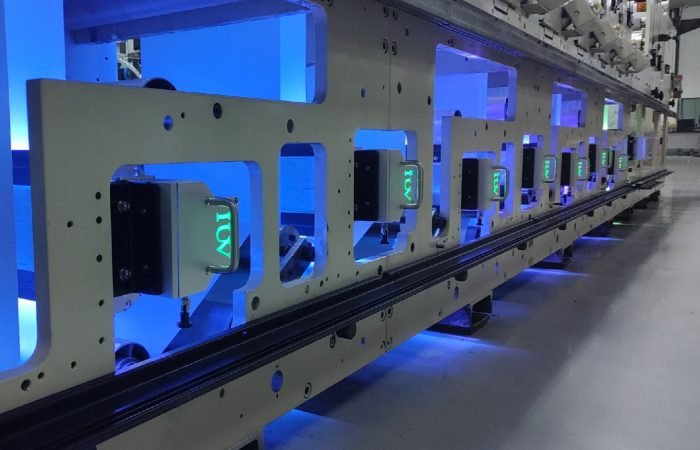The printing industry’s shift toward LED UV curing isn’t just about cutting energy bills. For label, flexographic, offset, and narrow-web printers, this technology unlocks operational efficiencies that redefine productivity. Let’s explore how LED UV systems streamline workflows, reduce waste, and future-proof print operations.
1. Faster Turnarounds = Higher Margins
LED UV curing happens in milliseconds, not seconds. For label printers running short batches or variable data jobs, this instant “on-off” capability eliminates bottlenecks. No more waiting for mercury lamps to warm up or cool down. One beverage label manufacturer reduced job changeover time by 40% after switching to LED, allowing same-day deliveries for last-minute orders.
In flexo printing, faster curing enables higher press speeds without ink misting. A Midwest packaging converter achieved 25% faster line speeds for folding cartons, citing LED’s consistent output even during 12-hour runs.
2. Substrate Freedom Drives Innovation
Traditional UV lamps generate excess heat, warping thin films or heat-sensitive materials. LED systems operate at near-ambient temperatures, opening doors to:
- Printing on PET labels for cold-chain logistics
- Delicate foils in luxury packaging
- Temperature-sensitive medical device labels
A European narrow-web printer leveraged this to diversify into shrink sleeves for perishable goods—a market previously inaccessible with conventional UV.
3. Waste Reduction: Hidden Cost Killer
Mercury lamps degrade over time, causing inconsistent curing and scrap. LED intensity remains stable for ≈20,000 hours. A label converter reported a 60% drop in substrate waste after adopting LED, as ink adhesion issues vanished.
No ozone generation also means:
- No exhaust systems to maintain
- Reduced HVAC costs
- Compliance with indoor air quality regulations
4. Hybrid Workflows: Print, Cure, Convert – Inline
LED’s compact design enables curing units to fit into tight press configurations. One offset printer integrated LED modules between printing and die-cutting stations, eliminating off-line coating steps. The result? A 15% reduction in labor costs for high-volume book covers.
5. Sustainability That Clients Demand
While energy savings are well-documented, brands now scrutinize suppliers’ environmental footprints. LED UV systems check multiple boxes:
- 70% less energy vs. conventional UV
- No mercury disposal costs
- Compatible with bio-based inks
A sustainable packaging printer landed a Fortune 500 cosmetics contract by highlighting their LED-powered “cold cure” process for recyclable mono-material pouches.
The Bottom Line
LED UV isn’t an upgrade—it’s a strategic overhaul. For printers battling thin margins and tight deadlines, the ROI extends beyond kilowatt-hours. It’s about claiming capabilities competitors can’t match.
Ready to explore LED UV integration?
→ Calculate your potential scrap reduction: [Tool Link]
→ Download case study: LED UV in flexible packaging
→ Speak with a print engineer specializing in hybrid curing












